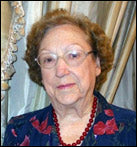
This is a guest blog post. It's authored by special guest blogger Dr. Geraldine Haggard who
is a retired teacher, Reading Recovery teacher leader, author, and university teacher. She spent 37 years in the Plano, TX school system. She currently tutors, chairs a committee that gifts books to low-income students, teaches in her church, and serves as a facilitator in a program for grieving children.
This blog post is an observation and analysis from Geraldine, conducted on a second grade student who is a struggling reader.
Helping a Young Reader Move From Use of a Skill to Use of a Strategy
(Based on a child with strong language skills)
In An Observation Survey for Reading Recovery teachers, Marie Clay cites her belief that readers develop strategies to cope with problems they meet as they read. She also felt that the text used with a child should be close to the natural language of the child.
Observation From Observing a Child With Strong Oral Language Skills, But Who Is Not Using This Strength As A Strategy For Unlocking Unknown Words
Recently I began working with a second grader who is not successful in his classroom. I wondered “Why?”, so I did some screening and here are the results I found:
- His running record indicates that overall he was reading at a second grade semester one level. This running record gave him a percentage of accuracy in word attack of 94%. Four of the miscues were not meaningful. These key mistakes prevented his retelling of the story and answering some questions from the informal inventory selection I used. His errors included "little" instead of "lettuce", "men" instead of "mind", "there" instead of "early", and "garden" instead of "ground". "Lettuce" ended up being a key word to understanding the selection. He had no self-corrections.
- The Gentry Spelling Tests indicated that he had a spelling level of 75% of second grade words. He wrote correct spellings of some words that he did not read or write in holistic reading and writing samples. Some of the words that he wrote in spelling activities were unknown as he read.
- As I shared a large picture of people arriving at school, he quickly used complete sentences, including compound sentences and was able to tell me what he saw happening. Adjectives and adverbs were included. Several inferences were made without my prompting. His responses were shared quickly. Verbs were correctly used. Prefixes and suffixes were also correctly used in his oral responses.
- His writing sample had one run-on sentence that should have been four sentences. There was a lack of correctly used capital letters. His words included confusions in the use of letters that he had previously named and used in spelling words on the spelling test.
I observed the following needs of this reader :
- He was not using his strong language skills to predict and unlock unknown words. He approached the unknown words as words in isolation.
- Visual skills did not reveal the use of word patterns or word parts. His oral language was so fluent that there was no integration of cues. There were no self-corrections.
- Comprehension rate was poor because key words needed to understanding the passage were not self -corrected. He did not seem to understand that meaning was not present.
- Fluency disappeared when he did not use meaning and labored with unknown words.
Possible Ways to Accelerate the Growth of This Student:
His ability to cross-check for meaning and syntax as he attempts to read unknown words is a priority. This can be modeled by the teacher. It is not the time to teach isolated skills, but the time to use skills he has and help him make those language skills strategies. He needs to use his language skills to help determine meaning and understand that that the goal of reading is information. Helping this child read for a precise message is my goal. My reader has a bias for print detail. I can ask him to read with his finger or to confirm a prediction by attending to the initial and final sounds in words. The use of an analogy with a word that he can write and read can be prompted. He can then decide if his choice brings meaning to the text. Accelerated growth can be the result of teacher modeling and use of skills already observed in his performance in writing and reading.
Skill or Strategy?
P. David Pearson in Chapter 10, page 210 of What Research Has to Say About Reading Instruction suggests the following four steps in helping a child move from the use of a skill to the use of a strategy:
- Teacher Modeling
- Guided Practice by Child
- Shared Responsibility (teacher and child)
- Primarily Student Use of Skill
My goal with the child that I have described for you is to guide his strong oral language as he predicts unknown words and is checking for correct meaning and syntax . This is not a strategy until he is using the skill. Pearson's steps can help me as I observe his use of strong language skills as he reads and writes.
All readers and writers can grow in vocabulary as the teacher uses an integrated approach to multiple exposure in reading and writing in content areas . Children may first meet these new words as the teacher reads to the class. As students hear a new word, read the word in a holistic setting, and write the word several times, until they grow in the use of new vocabulary. My books are examples of science and social studies texts that can be used in guided reading and independent reading. The teacher can then expect to see growth in the student's growth in the content area and writing. The books are: Seeds , Four Seasons , Helpers , and What Is A Friend .
~~~
Geraldine Haggard is the author of several books from our Kaleidoscope Collection Series. For more information about the K aleidoscope Collection Series click HERE to return to our website or click the series highlight page below.













































![6 Fun and Easy Activities to Practice Sequencing [Grades K-1]](http://www.hameraypublishing.com/cdn/shop/articles/Red_Typographic_Announcement_Twitter_Post-5_bf1ae163-a998-4503-aa03-555b038d1b76_600x.png?v=1689961568)
![Leveraging Prior Knowledge Before Writing and Reading Practice [Grades 1–2]](http://www.hameraypublishing.com/cdn/shop/articles/Red_Typographic_Announcement_Twitter_Post-4_600x.png?v=1689961965)




